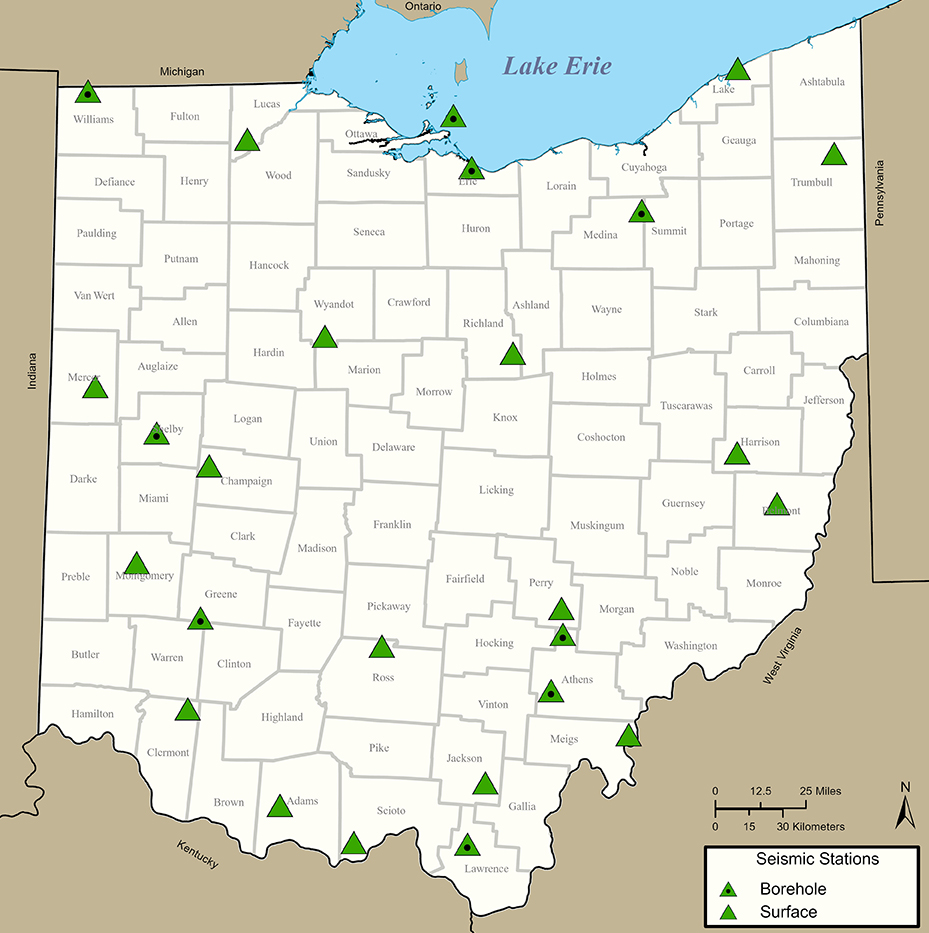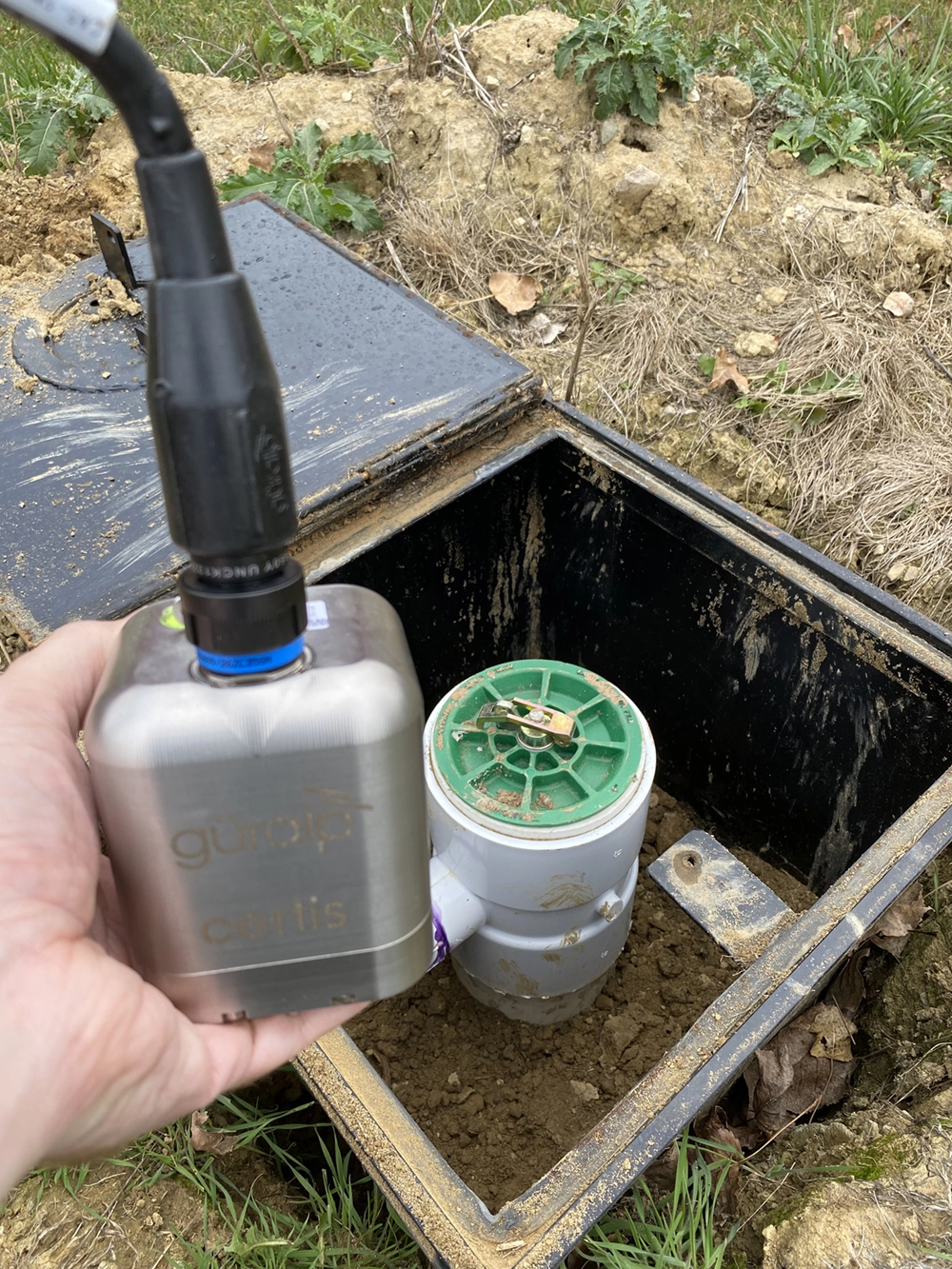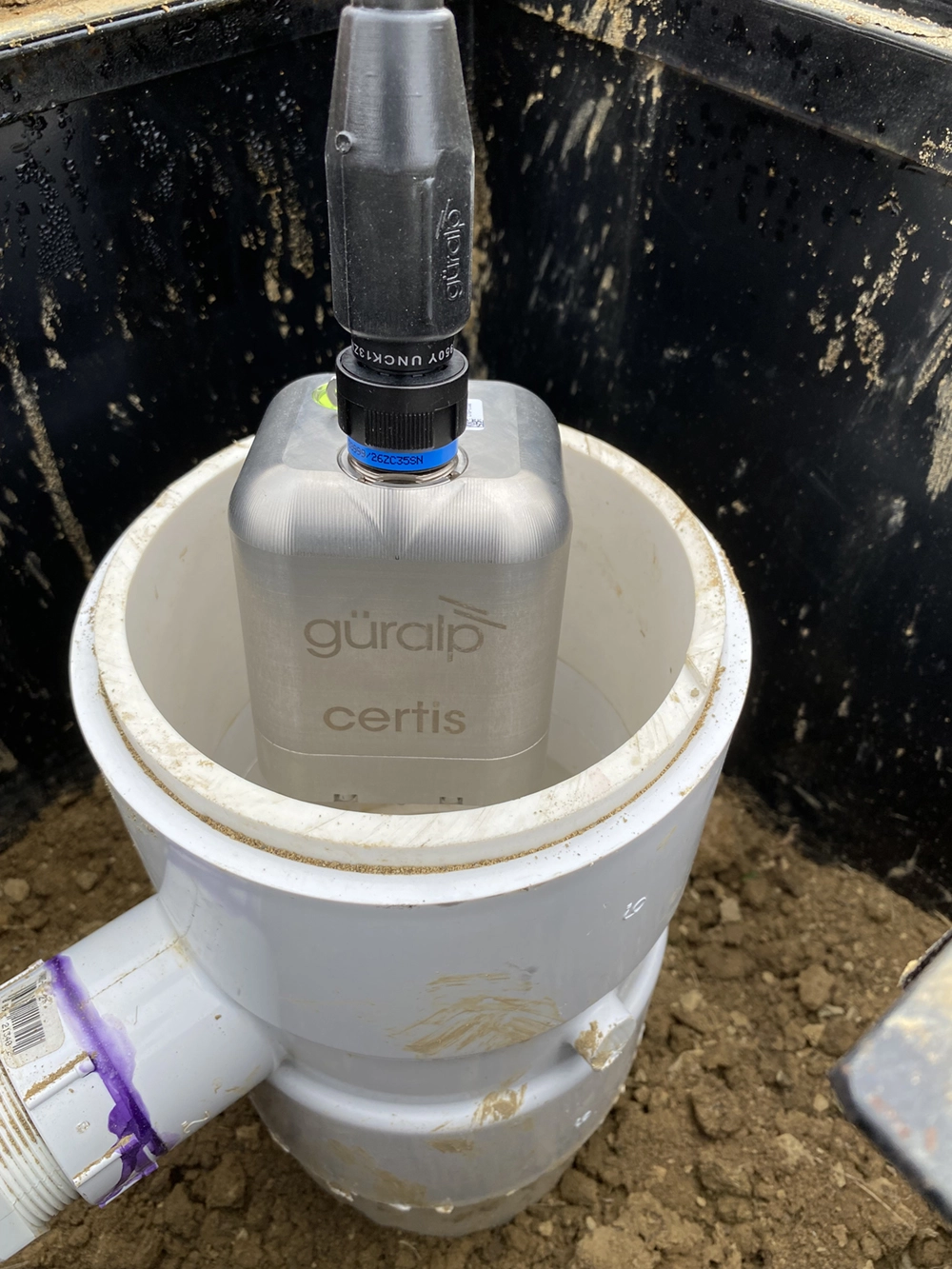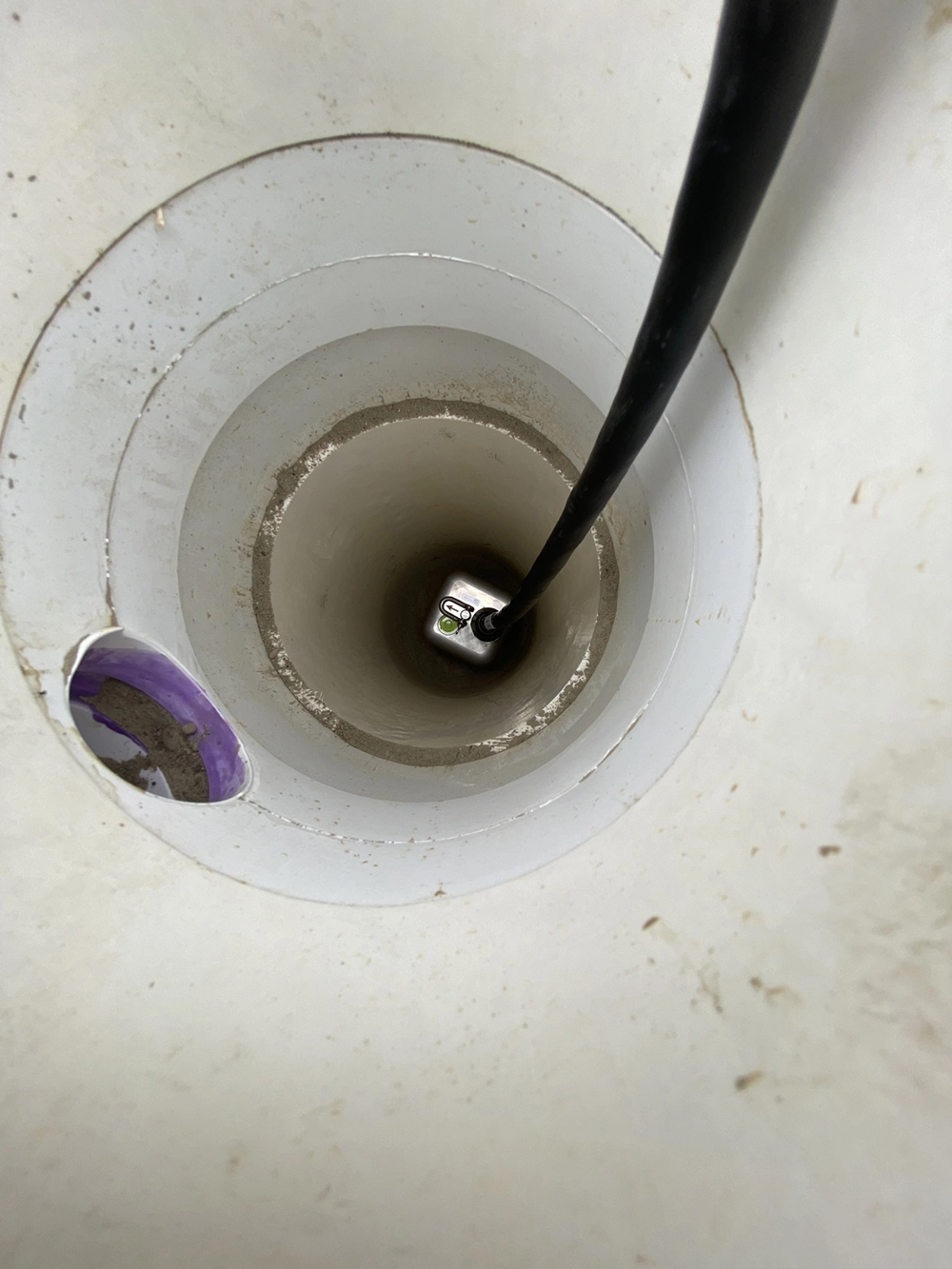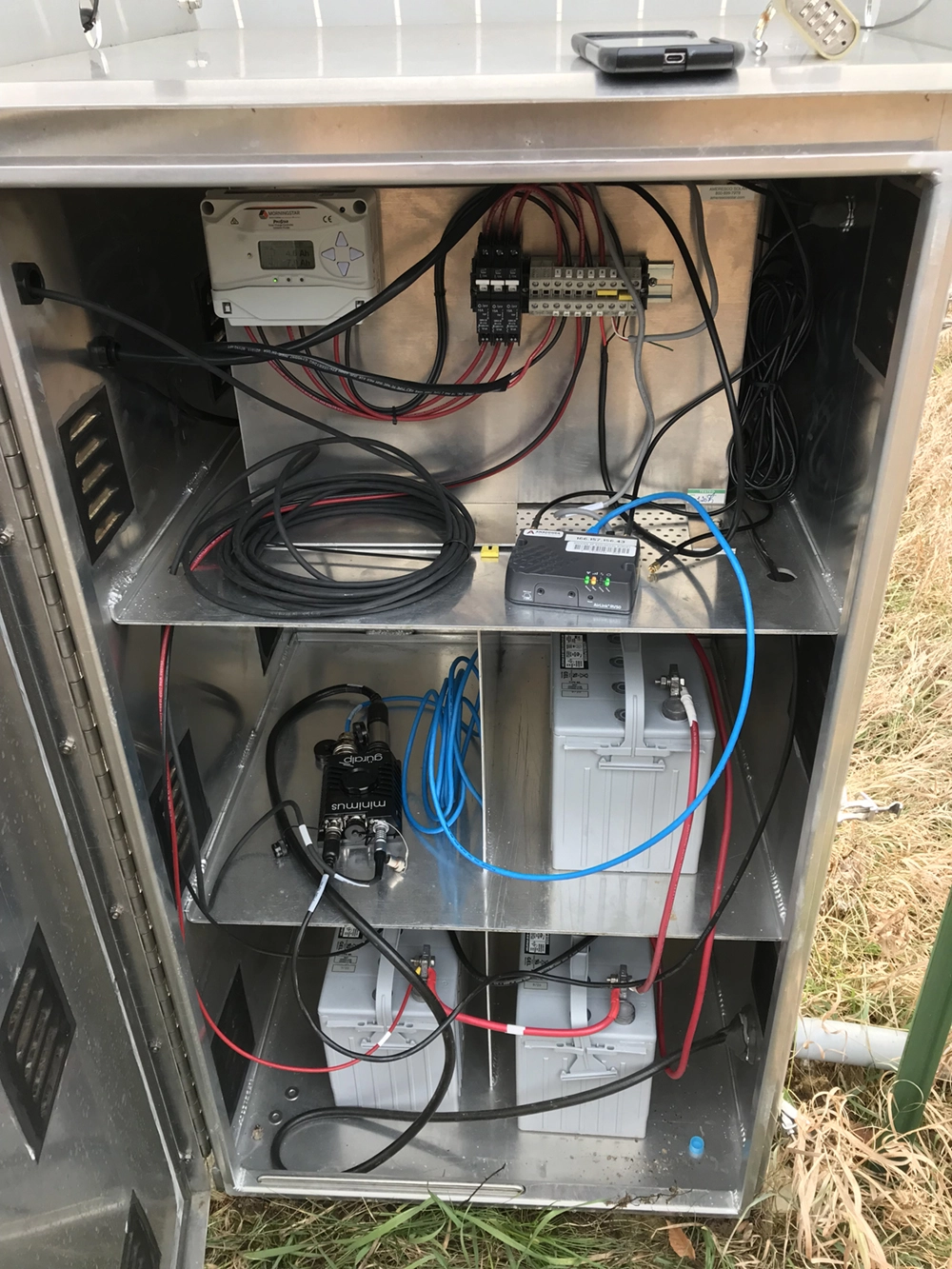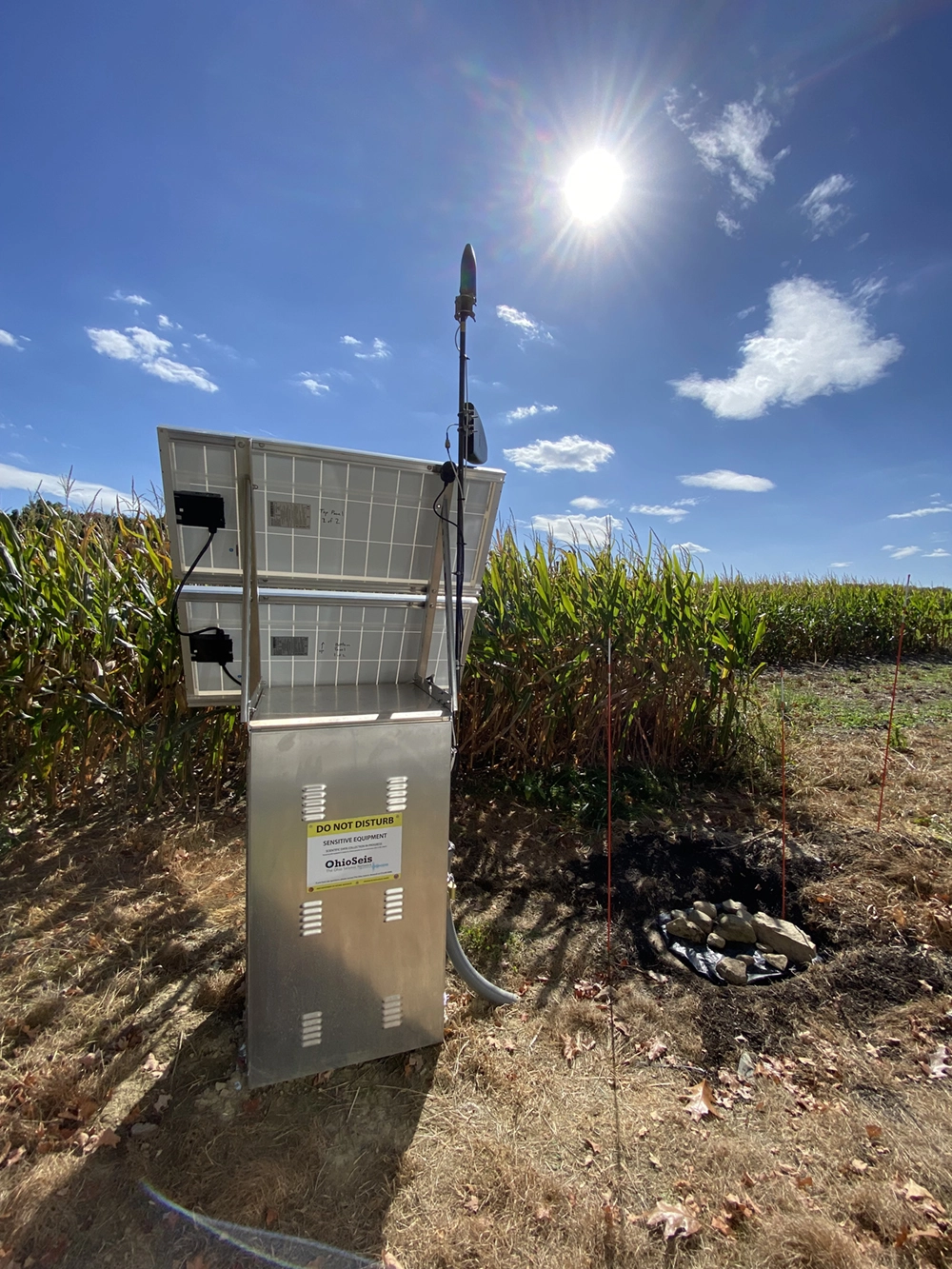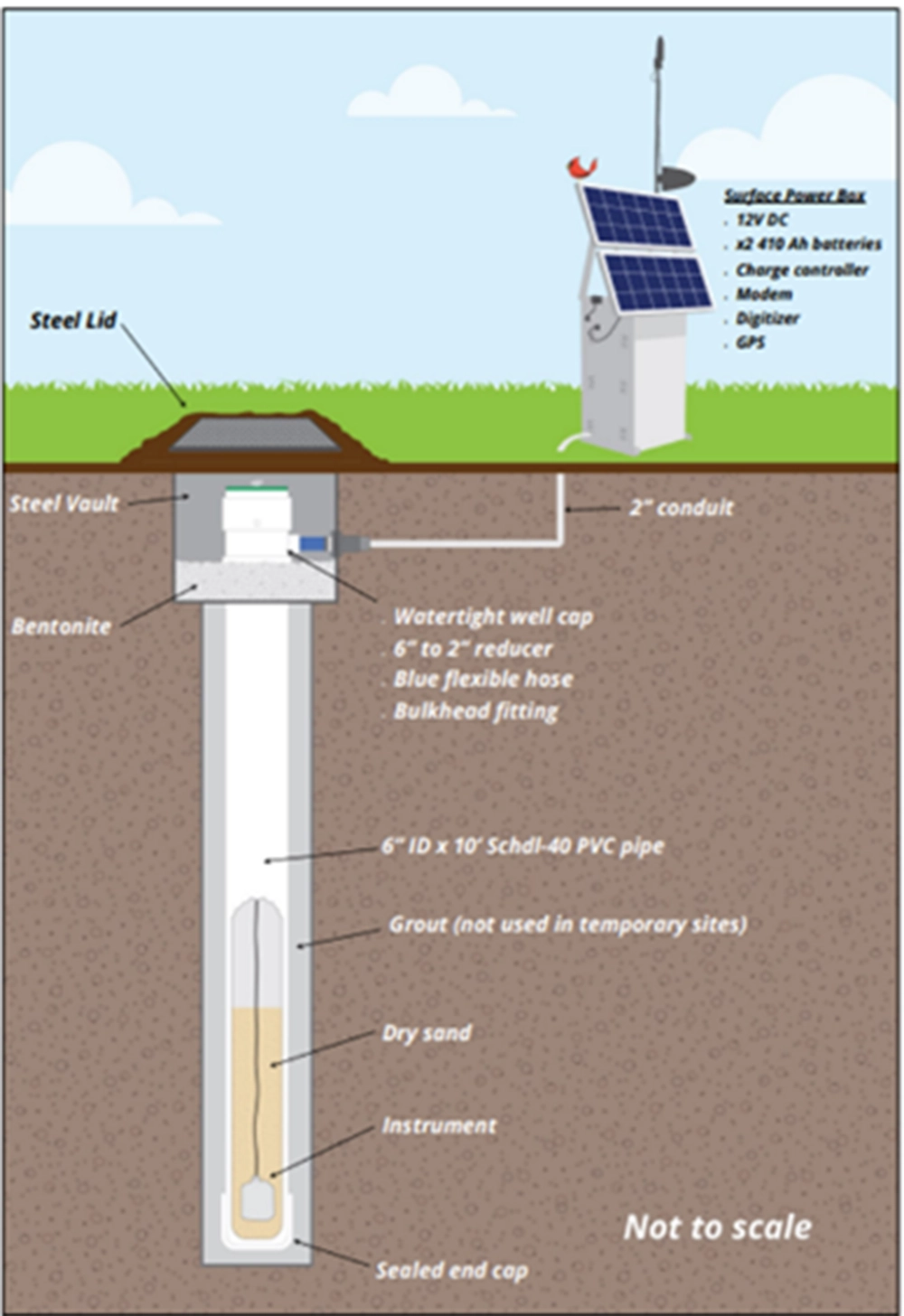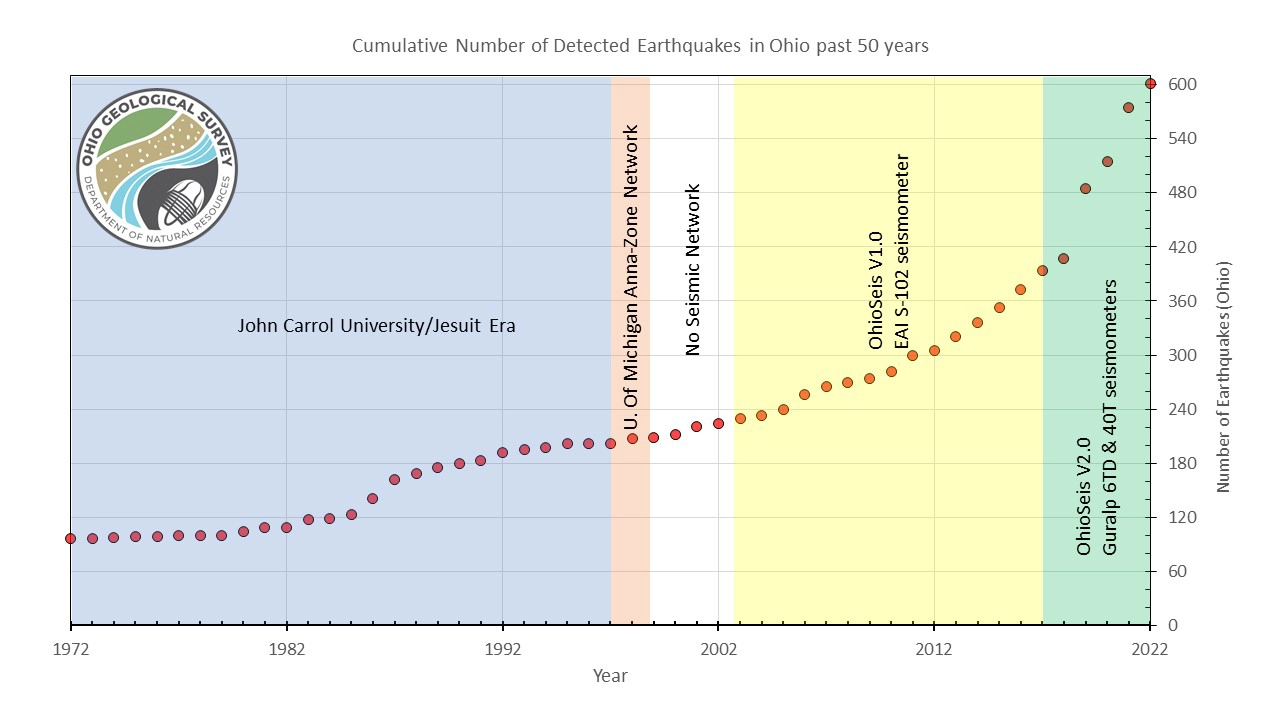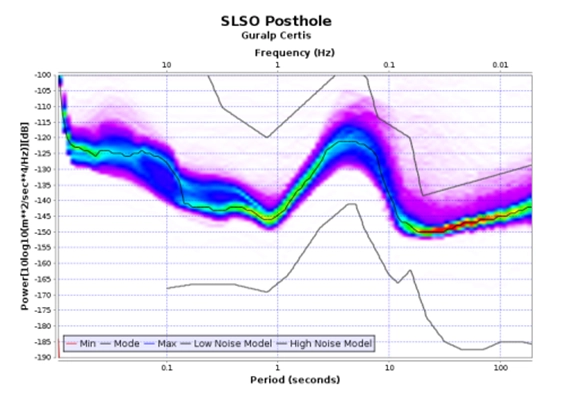Summary
Ohio experiences relatively low magnitude events, so it is important to have a low-noise seismic network to accurately locate and estimate the magnitude of events across the state. Over the past decade, the state has also seen an increase in oil and gas exploration which requires additional monitoring to ensure safe practices. The overall aim of installing the seismic sensors in posthole installations is to reduce the detection threshold of the network to be able to detect events down to Magnitude 1, therefore allowing for better characterisation of seismic activity in the state.
Background
Seismic station coverage of the US Midwest is sparse and has not been sufficient for in depth seismic studies since the Transportable Array (TA) was moved out of the region. Ohio Geological Survey is leading the way to increase station density to the previous TA levels, which will stimulate future investigations in the region.
Initially, the network transitioned from older shallow surface vaults, which used the digital Güralp 6TD instruments, to 10 m posthole stations using the Güralp 40T posthole instrument. Since 2023, the Güralp Certis has been selected. Certis, an ultra-compact medium motion seismometer that doesn’t require levelling or orienting during deployment is the modern alternative to the 40T.
Posthole deployments of instruments are a cost-effective method for improving station performance without the additional cost of building dedicated vaults. Even partial burial of the sensor can dramatically improve the signal-to-noise ratio of the collected data. Recent technological advances in sensor design and improved robustness have made the deployment of posthole sensors easier for network operators. This will be further improved with Certis because the need to orientate the sensor downhole will be removed.
Figure 2. Map of Ohio Seismic Network Monitoring Stations in 2021
The Güralp Solution
Since 2021, nine 40T and 10 Certis sensors have been deployed into the network with Minimus digitizers. A further four Certis are due for deployment during 2025.
Certis is a compact and portable seismometer with a response of 120 s to 100 Hz. Advanced sensor technology allows for an adjustable long-period corner and delivers analogue output with state-of-health parameters. Certis also has the ability to perform at any angle.
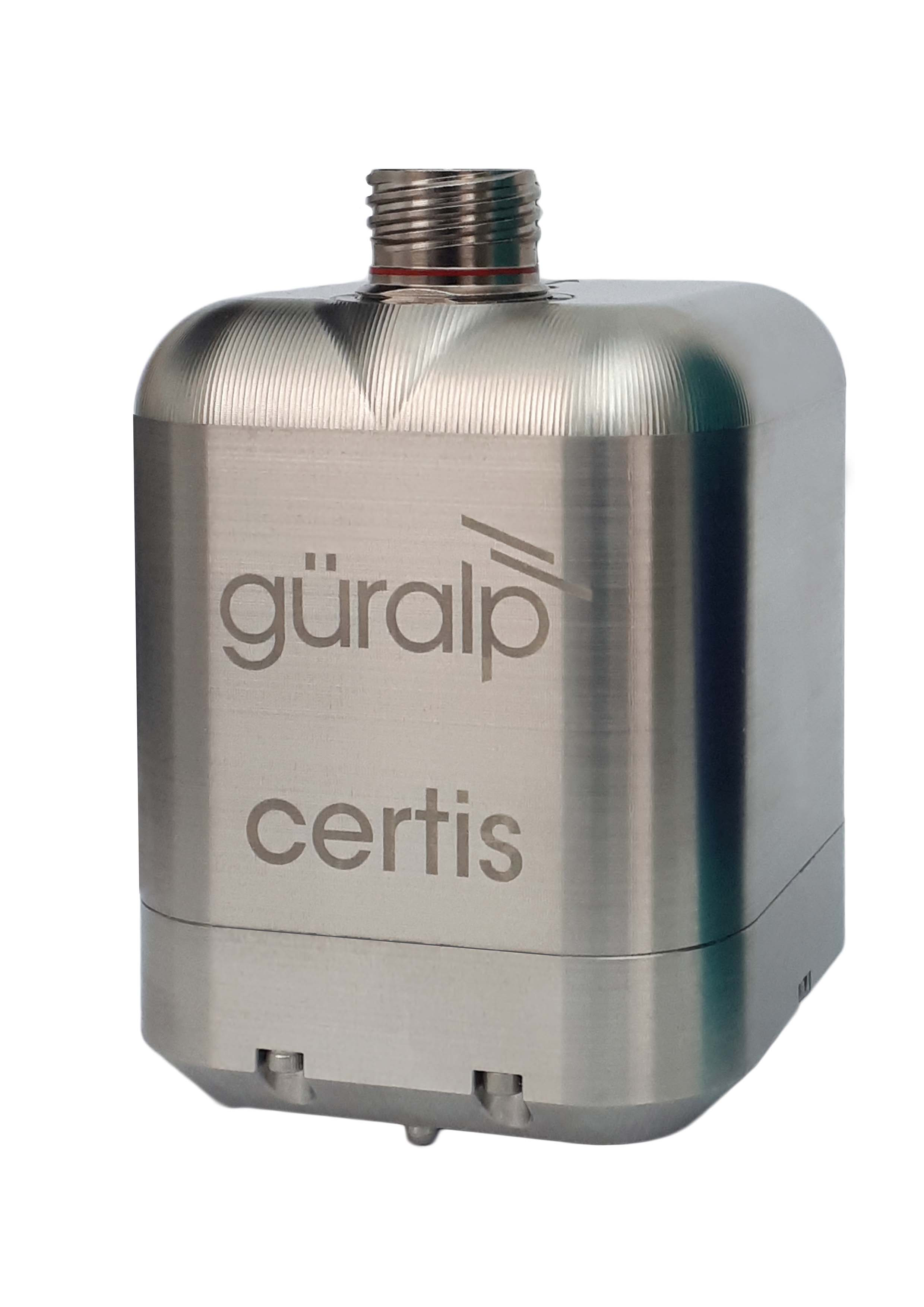
Figure 3. Certis
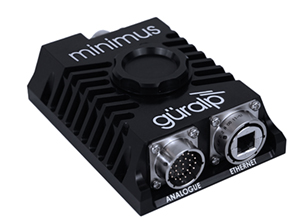
Figure 4: Minimus digitiser
Deployment
The 40T sensors were deployed in 10m cased postholes on a levelled base of sand. The instruments were lowered into the holes using strain relief cable and a downhole camera assisted with orientating the sensors using a U-bolt on a pole. A plumb line was dropped from the surface to mark the direction of true north and a downhole camera assisted with monitoring the bubble level as the instrument was levelled downhole. The sensor vault was sealed with tarpaulin and covered in mulch to further protect against moisture ingress and weeds.
The Certis are deployed inside either 6” or 8” ID PVC pipe cut to the desired length and inserted into boreholes. The Certis were packed on a firm bed of dense fine-grained sand to improve coupling.
Permanent sites were grouted in, and these pipes were capped and sealed at both ends to prevent fluid ingress. Lastly, a hose connected the vault to the waterproof surface box which contains the Minimus digitizer, batteries, charge controller and communication modem. Data is then streamed in real-time back to the Ohio Geological Survey data centre. The Minimus units provide quick and easily understood State-of-Health data to the network which allows the Survey to efficiently plan for any required station maintenance. For example, the adjustment of GPS antennas if the GPS lock is insufficient
Depending on the depth of deployment, a complete posthole installation can be completed in just a few hours and for <$100.
Outcome
2023 saw the installation of the new Certis seismometers, four in brand new seismic stations and three replacing older 40T / 6TD stations. A further two new stations and one upgrade were installed in 2024 and a further four new stations are planned for 2025, all instrumented with the Certis.
Reviewing the performance of their seismic network, OhioSeis had a goal of 80% network data availability. Overall, the OhioSeis network exceeded its goal with a rating of 93% data availability in 2023. 23 of the 29 instruments gave 90-100% availability, 5 gave 80-89% availability and only one instrument performed at 70-79% data availability. Reduced data availability from instruments were mainly caused by communication issues and weather-related problems from flooded vaults, power disruptions and lightning strikes. Disrupted data was backed up to the onboard storage of the Minimus digitizers with dual redundancy memory cards. During these instances, data was back filled and sent once communications were re-established.
Figure 11. Cumulative number of detected earthquakes in Ohio in the past 50 years
On the right are OhioSeis Power Spectral Density (“PSD”) plots comparing the previously installed 6TD sensor to the new Certis sensor at station SLSO. Comparing the plots, Certis stations performed better, recording a lower self-noise than the 6TD at long periods. On average, the Certis stations had a tighter PSD banding in relation to the 6TD, providing consistent data and improved performance. 6TD performance in a surface vault can be affected by temperature and pressure changes, however the new generation Certis, used in a posthole setting, experiences less interference from environmental factors and shows improved self-noise characteristics.
- Jeffrey Fox, OhioSeis Seismic Network Manager/Seismologist, Ohio Geological Survey



